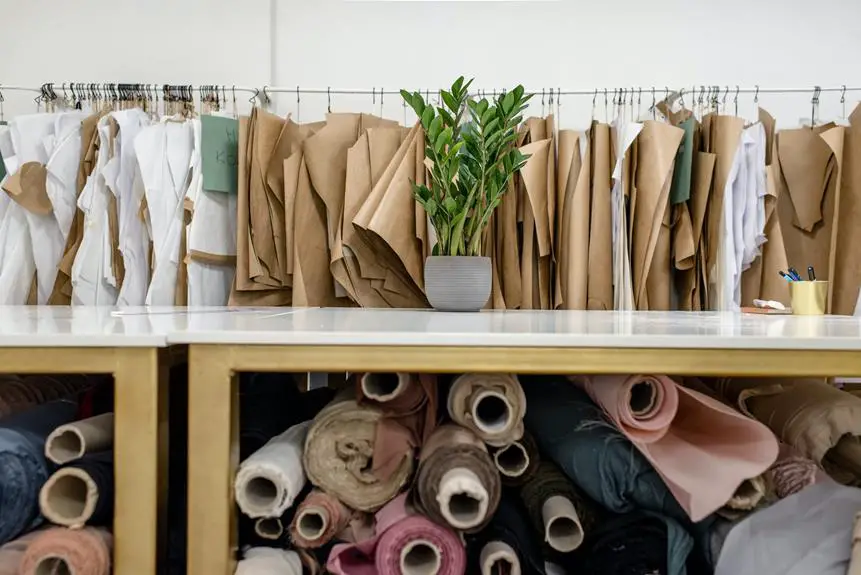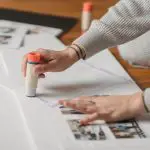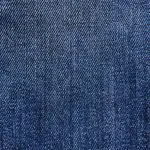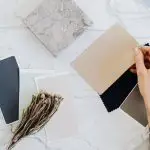Looking for the strongest fabric glue to tackle your toughest projects? You're in luck. When it comes to finding the ultimate adhesive for your fabric needs, you want a product that can withstand the test of time and hold up to the most demanding tasks.
You need a glue that offers unparalleled strength and reliability, allowing you to master any fabric bonding challenge with confidence. In this guide, we'll explore the top contenders in the world of fabric glue, comparing their strength, durability, and application techniques.
By the end, you'll have a clear understanding of which fabric glue stands out as the strongest, empowering you to achieve flawless results every time.
Key Takeaways
- Adhesive strength varies among fabric glues, so it is important to choose the right product based on specific needs.
- Factors such as fabric type compatibility, temperature resistance, and water resistance are crucial for strong fabric adhesion.
- Waterproof and durable glue, with features like heat resistance and flexibility testing, contribute to strong adhesion.
- When comparing fabric glues, consider factors such as tensile and shear strength, durability, resistance to washing and dry cleaning, and overall bonding strength to determine the best glue for a project.
Fabric Glue Strength Explained
When choosing fabric glue, you want to understand the strength levels to ensure it meets your specific needs. Fabric glue bonding is crucial for the success of your projects. The adhesive strength of fabric glues can vary widely, so it's important to consider the specific requirements of your project before making a selection.
The adhesive strength of fabric glue refers to its ability to create a lasting bond between fabric surfaces. Different fabric glues offer varying levels of adhesive strength, with some designed for lightweight fabrics and others for heavy-duty materials. Understanding the adhesive strength of fabric glue is essential to ensure that it can withstand the demands of your project, whether it's for hemming, patching, or creating durable seams.
When evaluating fabric glue options, consider the type of fabric you'll be working with and the intended application. For example, if you're working with denim or canvas, you'll need a fabric glue with high adhesive strength to ensure a durable bond. On the other hand, delicate fabrics may require a gentler adhesive to avoid damage. By understanding fabric glue bonding and adhesive strength, you can confidently select the right product for your specific needs.
Top Factors for Strong Fabric Adhesion
When it comes to achieving strong fabric adhesion, there are key factors to consider.
The type of fabric you're working with plays a crucial role in determining the effectiveness of the adhesive.
Additionally, the ability of the glue to withstand water and other elements is essential for ensuring a durable bond.
Fabric Type Compatibility
To achieve strong fabric adhesion, it's crucial to consider the compatibility of the fabric type with the adhesive you're using. Different types of fabric may require specific adhesives to ensure a strong bond. Fabric material compatibility and bonding strength are top factors to consider when choosing a fabric glue.
Temperature resistance also plays a vital role in the bonding effectiveness of fabric glue. Some fabrics may need adhesives that can withstand high temperatures, while others require resistance to cold temperatures.
Understanding the specific fabric type and its requirements will help you select the most suitable fabric glue for your project. Keep in mind that considering these factors will contribute to achieving the strongest fabric adhesion possible.
Waterproof and Durable
Once you have selected the appropriate fabric glue based on fabric type compatibility, it's essential to ensure that it's waterproof and durable to achieve the strongest fabric adhesion.
Waterproof fabric glue ensures that your bond remains intact even when exposed to moisture or wet conditions. Look for a glue that offers heat resistance, allowing it to withstand various temperatures without compromising its adhesive properties.
Additionally, durability is crucial for long-lasting adhesion, especially for items that will undergo frequent use or washing. Consider opting for a fabric glue that has undergone flexibility testing to ensure that it can withstand movements and stretching without weakening the bond.
Prioritizing waterproof and durable fabric glue, with features such as heat resistance and flexibility testing, is key to achieving the strongest fabric adhesion.
Comparison of Leading Fabric Glues
As you compare the leading fabric glues, it's essential to consider their bonding strength, durability, and resistance to washing and dry cleaning. When evaluating these factors, keep in mind the following key points:
- Adhesive bonding: Look for a fabric glue that offers a strong and reliable adhesive bond. This ensures that your fabrics stay securely attached even under stress.
- Strength comparison: Compare the tensile and shear strength of different fabric glues to determine which one can withstand the most pressure and stretching without losing its bond.
- Durability: Consider the longevity of the bond and the overall durability of the fabric glue, especially if you'll be using it for heavy-duty or long-term projects.
- Resistance to washing and dry cleaning: Check whether the fabric glue is designed to withstand repeated washing or dry cleaning without deteriorating or losing its adhesive properties.
Testing Durability and Longevity
When it comes to choosing the strongest fabric glue, durability and longevity are crucial factors to consider. You want a glue that can withstand wear and tear, and that will keep your fabric projects intact for the long haul.
Testing the durability and longevity of fabric glues will provide insight into which one will best suit your needs.
Durability of Fabric Glue
Testing the durability and longevity of fabric glue can provide valuable insight into its strength and reliability for your crafting projects. When assessing the durability of fabric glue, consider the following factors:
- Bonding Techniques: Different fabric glues may require specific bonding techniques, such as clamping or air-drying, to achieve optimal durability. Understanding these techniques can help ensure a strong and long-lasting bond.
- Material Compatibility: Assess the compatibility of the fabric glue with the materials you intend to bond. Compatibility plays a crucial role in determining the longevity of the bond and the overall durability of the project.
- Environmental Factors: Evaluate how well the fabric glue withstands environmental elements like moisture, heat, and cold, as these can affect its long-term durability.
- Flexibility and Strength: Look for fabric glues that offer both flexibility and strength, as these properties contribute to the durability of the bond, especially in items that may experience movement or stress.
Longevity of Adhesive
To understand the longevity of adhesive and test its durability, you need to consider how well it withstands environmental elements and its compatibility with the materials you're using.
When testing the longevity of adhesive bonding for fabric repair, it's essential to simulate real-life conditions. Expose the bonded materials to varying temperatures, humidity, and UV radiation. This helps to assess how the adhesive holds up over time, ensuring it won't degrade or weaken when exposed to different environments.
Additionally, consider the flexibility of the adhesive bond, as fabrics often undergo stretching and movement. A durable adhesive should maintain its bond even under these conditions.
Application Techniques for Maximum Strength
For maximum strength, apply the fabric glue directly to both surfaces. This ensures maximum contact between the adhesive and the fabric, enhancing the fabric bonding strength.
Here are some techniques to maximize the strength of your fabric bonds:
- Even Application: Ensure an even layer of fabric glue on both surfaces to prevent weak spots in the bond.
- Proper Pressure: After applying the glue, press the surfaces firmly together to ensure a strong bond. You can use a roller or apply pressure with your hands.
- Drying Time: Allow the glue to dry for the recommended time without disturbing the bond. Rushing the drying process can result in a weaker bond.
- Temperature Consideration: Some fabric glues work best at specific temperatures. Be sure to follow the manufacturer's recommendations for the best results.
User Tips for Ensuring Strong Bonding
Once you have applied the fabric glue according to the manufacturer's instructions, ensure that you allow sufficient drying time for a strong bond to develop. Rushing the drying process can compromise the adhesive strength and result in a weaker bond. Additionally, here are some user tips and techniques to ensure strong bonding and adhesion when using fabric glue:
| User Tips for Strong Bonding | ||
|---|---|---|
| 1. Clean Surfaces Thoroughly | 2. Apply Even Pressure | 3. Use the Right Amount |
| Before applying fabric glue, ensure that the surfaces are clean and free from any dust, oil, or dirt. | When bonding fabrics, apply even pressure to the glued areas to promote better adhesion. | Using the right amount of fabric glue is crucial. Avoid over-applying as it can lead to seepage and messiness. |
Final Verdict: The Strongest Fabric Glue
When you're deciding on the strongest fabric glue for your project, it's essential to consider various factors such as the type of materials being bonded and the specific requirements of your application. When comparing fabric glues, you should pay attention to the bonding techniques they're designed for and how they align with your project needs.
Additionally, consider the results of longevity testing to ensure the glue can withstand the demands of your particular application. User experience is also crucial, so look for feedback from others who've used the fabric glue for similar projects.
Here is a comparison of different fabric glues based on these factors:
- Bonding Techniques: Evaluate if the glue is suitable for the specific materials you're working with, such as cotton, denim, leather, or synthetic fabrics.
- Product Comparison: Compare the strength, drying time, and flexibility of different fabric glues to determine the best option for your project.
- Longevity Testing: Look for information on how well the glue holds up over time, especially when exposed to washing, heat, or other stressors.
- User Experience: Consider feedback from other crafters or professionals who've used the fabric glue for similar applications to gauge its effectiveness and reliability.
Frequently Asked Questions
Can Fabric Glue Be Used on All Types of Fabric, Including Delicate Materials Like Silk and Lace?
When using fabric glue on delicate fabrics like silk and lace, ensure it's suitable for the material. Fabric glue offers benefits for crafting, providing a strong bond without damaging delicate materials. Always test on a small, inconspicuous area first.
Are There Any Special Considerations for Using Fabric Glue on Stretchy or Flexible Fabrics Like Spandex or Lycra?
When using fabric glue on stretchy fabrics like spandex or lycra, ensure proper adhesion strength by applying the glue in a thin, even layer. Consider fabric types and weather resistance. Follow safety precautions to avoid health risks.
How Does Fabric Glue Hold up in Different Weather Conditions, Such as Extreme Heat or Cold?
In different weather conditions, fabric glue's durability varies. Extreme heat can weaken the bond, while cold can slow drying time. To ensure a strong hold, apply the glue evenly and use application techniques suitable for the specific fabric.
Can Fabric Glue Be Used for Outdoor Applications, Such as Repairing Outdoor Furniture or Umbrellas?
For outdoor applications like repairing outdoor furniture or umbrellas, waterproof fabric glue can be your go-to. It's designed for outdoor use, providing strong and durable bonds even in extreme weather conditions.
Are There Any Safety Precautions or Potential Health Risks Associated With Using Fabric Glue?
When using fabric glue, it's crucial to be aware of potential risks and take safety precautions. Always work in a well-ventilated area, avoid skin contact, and follow the manufacturer's guidelines to minimize any health hazards.
- Tetron Fabric for Marine Applications: Durability and Use Cases - June 18, 2025
- Tetron Fabric for Outdoor Furniture: Weather Resistance and Care - June 18, 2025
- Tetron Fabric for Wall Coverings: Style and Application Tips - June 18, 2025







